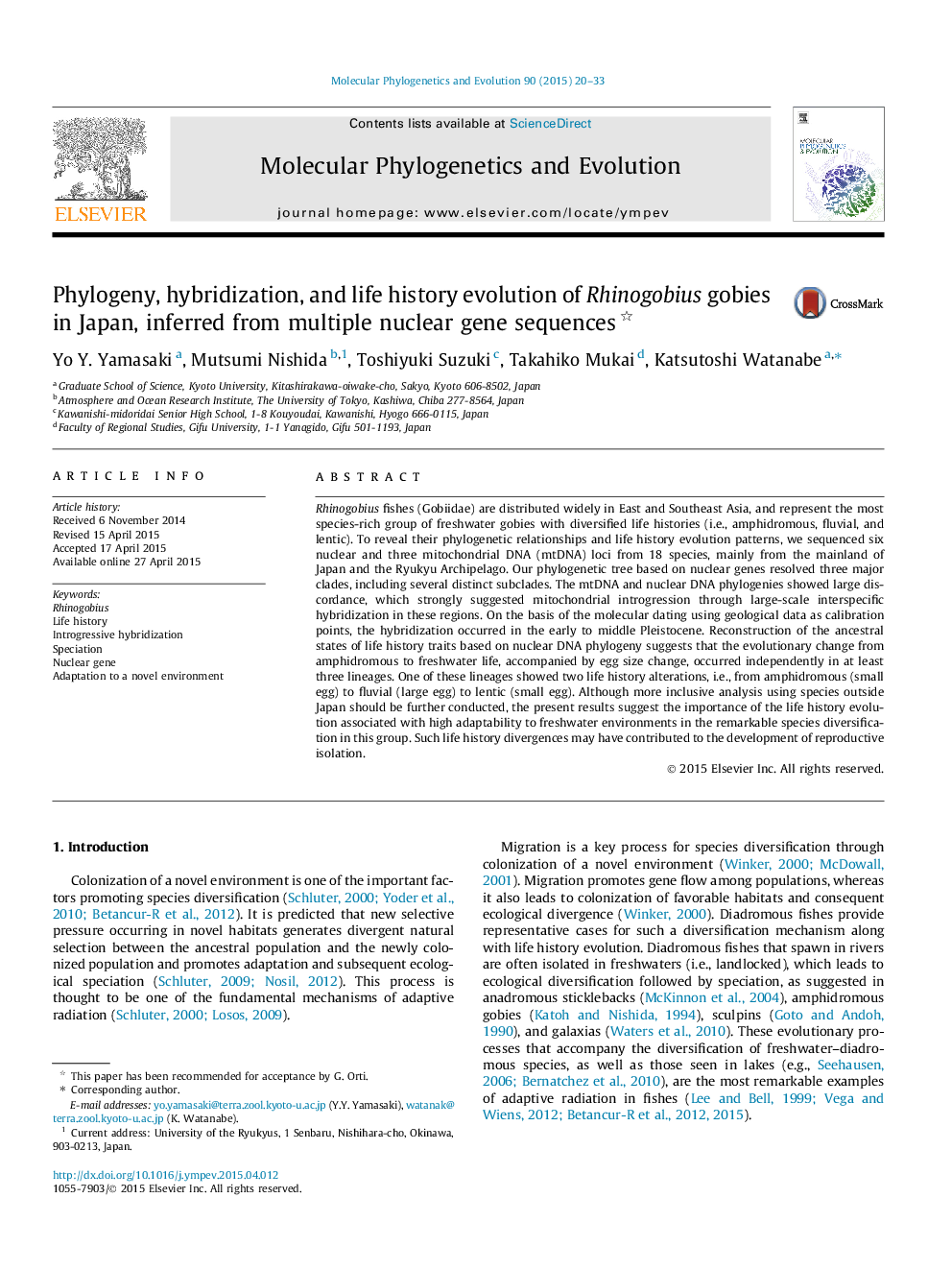| کد مقاله | کد نشریه | سال انتشار | مقاله انگلیسی | نسخه تمام متن |
|---|---|---|---|---|
| 2833760 | 1570806 | 2015 | 14 صفحه PDF | دانلود رایگان |

• Phylogeny of Rhinogobius gobies was inferred using sequences from 6 nuclear and 3 mtDNA loci.
• Large-scale mtDNA introgression involving almost all Japanese species was revealed.
• Freshwater invasion with egg size change occurred in at least three lineages.
• One lineage experienced two life history alterations.
Rhinogobius fishes (Gobiidae) are distributed widely in East and Southeast Asia, and represent the most species-rich group of freshwater gobies with diversified life histories (i.e., amphidromous, fluvial, and lentic). To reveal their phylogenetic relationships and life history evolution patterns, we sequenced six nuclear and three mitochondrial DNA (mtDNA) loci from 18 species, mainly from the mainland of Japan and the Ryukyu Archipelago. Our phylogenetic tree based on nuclear genes resolved three major clades, including several distinct subclades. The mtDNA and nuclear DNA phylogenies showed large discordance, which strongly suggested mitochondrial introgression through large-scale interspecific hybridization in these regions. On the basis of the molecular dating using geological data as calibration points, the hybridization occurred in the early to middle Pleistocene. Reconstruction of the ancestral states of life history traits based on nuclear DNA phylogeny suggests that the evolutionary change from amphidromous to freshwater life, accompanied by egg size change, occurred independently in at least three lineages. One of these lineages showed two life history alterations, i.e., from amphidromous (small egg) to fluvial (large egg) to lentic (small egg). Although more inclusive analysis using species outside Japan should be further conducted, the present results suggest the importance of the life history evolution associated with high adaptability to freshwater environments in the remarkable species diversification in this group. Such life history divergences may have contributed to the development of reproductive isolation.
Figure optionsDownload as PowerPoint slide
Journal: Molecular Phylogenetics and Evolution - Volume 90, September 2015, Pages 20–33